Important Basics to Know About Python Programming
Almost All Programmers And Training Sites Believe That Python is a simple programming language because Its Syntax Is Easy To Learn, and beginners can use the concepts they have learned after a few months.
However, Python is best read about important practical concepts that are highly convergent with other languages. In this article, we will mention some of these important concepts.
Concepts of object-oriented programming in Python
Object-oriented programming (OOP) is a specific type of computer programming in which the programmer defines the data type of a data structure and the types of operations (functions) that can be performed on it. In this way, the data structure becomes an object that contains data and functions.
In addition, programmers can create relationships between one object and another. For example, objects can inherit properties from other objects.
One of the main advantages of object-oriented programming paradigms over procedural programming techniques is that they allow developers to use modules without changing them when defining new objects.
A programmer can easily create a new object and inherit most of the properties of an existing object.
This makes object-oriented programming easier.
Most modern programming languages support the object-oriented paradigm, although some older programming languages, such as Pascal, offer a similar feature.
High-level object-oriented programming languages include Java, C++, C #, Python, SmallTalk, and more. The paradigm of object-oriented programming is surrounded by essential concepts as follows:
Abstraction in Python
Abstraction refers to the process of picking standard features of objects and procedures. This concept selects data from a large pool to show the user only the details of that object.
Abstract only “shows” basic features and “hides” unnecessary information. Abstraction helps reduce complexity and improve programmer performance.
For this reason, objectivism is one of the most essential concepts of programming. Hiding information means hiding the details of an object or function. Hiding information is a powerful programming technique because it reduces complexity.
Encapsulation in Python
Capsulation is the process of combining elements to build a new entity. A procedure is an encapsulation process because it combines a set of computer instructions. Encapsulation is one of the basic concepts of object-oriented programming (OOP). It describes data and methods that operate as a single concept, a class.
This concept is also used to hide an object’s interior view or state from the outside world. More precisely, only the information needed is shown to the outside world. The general idea of this mechanism is simple.
Suppose you have a trait that is not visible to the outside world of the object, and it is possible to provide this feature to the outside world with methods that make it possible to read or write to the object. In that case, you can hide specific information and the internal state of an object.
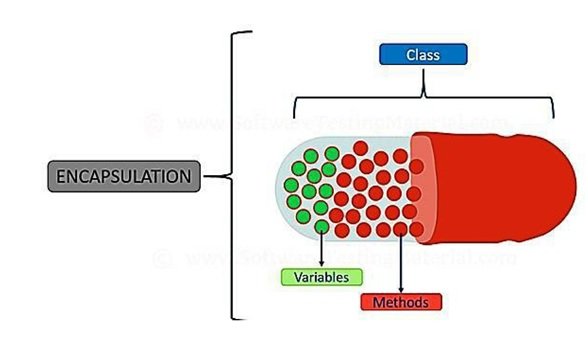
Inheritance in Python
Inheritance is how one class acquires ownership or, more accurately, inherits from another class. For example, the child inherits the traits of his parents. Using inheritance, we can use fields and methods within a two-tier class. Thus, inheritance facilitates reusability and makes object-oriented programming more practical.
Types of inheritance
Single inheritance
Single inheritance allows a derived class to inherit traits and behavior from a parent class. In simpler terms, single inheritance allows a derived class to inherit the properties and behavior of a base class, thus allowing the code to be reused and new features to be added to the existing code. This allows us to have more accurate code and not have to write duplicate code.
In single inheritance, it extends to another class (only one class).
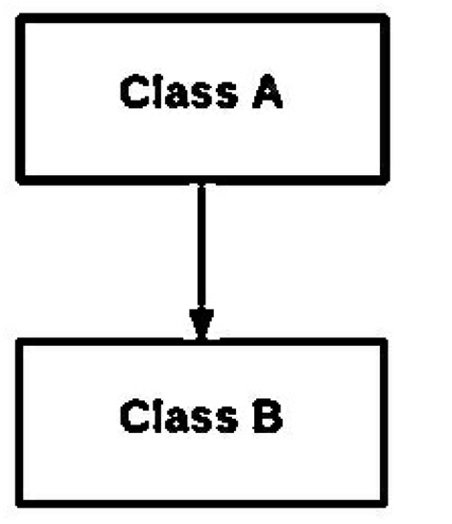
In the figure above, class B inherits the properties only from class A. Class A is a superclass, and Class B is a subclass.
Multiple Inheritance
Multiple inheritance is a feature of object-oriented programming languages in which an object or class can inherit the properties and attributes of one or more parent objects.
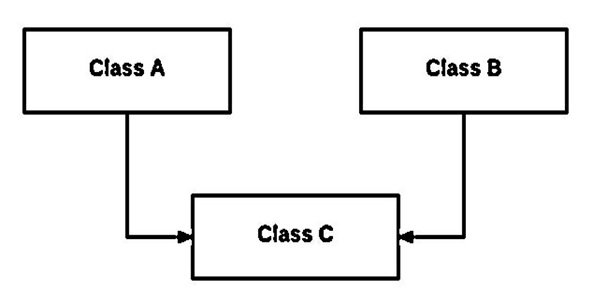
In the figure above, class C inherits the properties of class A and class B.
Multilevel Inheritance
In multilevel inheritance, a class can inherit from a derived class, which becomes the base class for the new class.
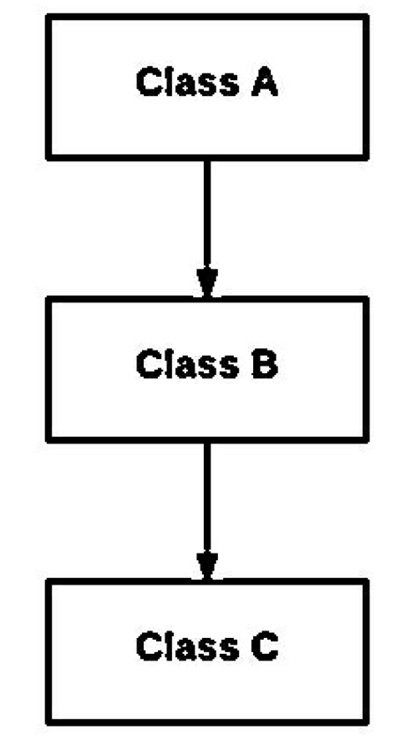
As the figure above shows, class C is subclass B, and B is subclass A.
Hierarchical Inheritance
This concept is called hierarchical inheritance, in which multiple classes inherit from the same class. In other words, several subclasses inherit from one class. In hierarchical inheritance, a parent class can have multiple child classes.
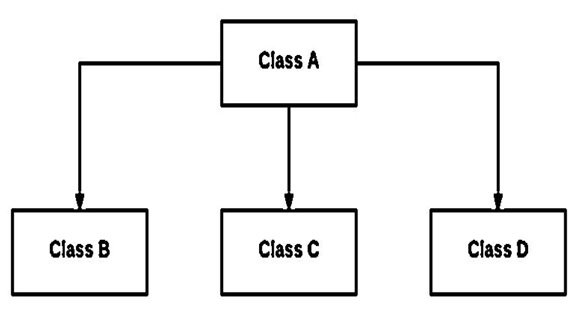
As the figure above shows, classes B, C, and D inherit from class A.
Hybrid Inheritance
Combined inheritance is another type of inheritance. A class hierarchically inherits two or more classes, in which case classes can inherit from the same parent class in a hierarchical inheritance.
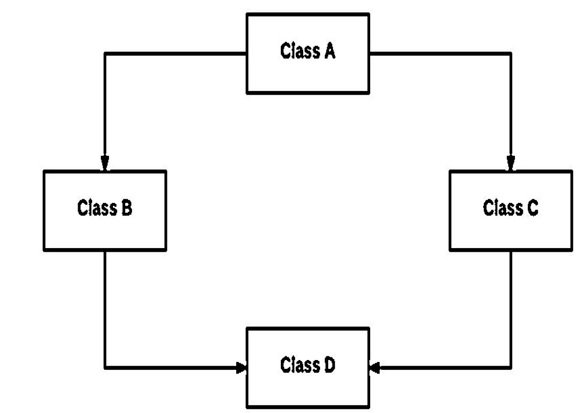
In hybrid inheritance, as shown in the figure above, all public and protected members of class A are inherited by class D through class B and then class C.
Determine the level of access.
Determinants of access levels determine how members of a class are accessed. Typically, there are three determinants: Public, Private, and Protected.
Public
Class members who are publicly introduced are also available outside the classroom and can be used.
Private
Members of a privately defined class are available within that class but are not accessible outside of the class. By default, member variables and functions are defined privately.
Protected
Members of a class defined as protected have an approach similar to private access determinants. These variables are inaccessible outside the class but can be accessed in subclasses.
Polymorphism
Polymorphism refers to an object’s ability to receive different types of shapes. The most common application of polymorphism in object-oriented programming occurs when the parent class reference refers to the child class object. Polymorphism can be static or dynamic.
In static polymorphism, the response to a function is determined at compile time.
In dynamic polymorphism, the response to a function is determined at runtime. Therefore, polymorphisms are available in the following two ways:
1. Compilation time polymorphs (static)
2. Run-time polymorphs (dynamic)
Compilation time polymorphs
Attaching a function to an object during compile time is called early binding. This condition is also known as static binding. There are two ways to implement static polymorphism.
1. Function overloading
2. Operator overloading
Function Overload in Python
Function overload is a property in which two or more functions can have the same name but different parameters. Function overloads are two or more functions with the same name but different arguments. The following example shows a functional overload called a test.
int test () {test
int test (int a) test test
float test (double a)}} int test (int a, double b) {}In the example above, all four functions use the function overload approach because the arguments assigned to the functions differ.
Operator overload in Python
An operator in a programming language is a symbol that tells a compiler or interpreter to perform a specific mathematical, logical, or relational operation to obtain a definite result from that operation.
For example, +, -, and * are mathematical operators and symbols such as &, |, and! Logic operators and symbols such as>, <, =, etc., are relational operators. Operator overlay is a polymorphic type that defines different uses for the operator for the user.
Operator overload is often used when the user performs calculations on self-defined data types. For example, the “+” operator can implement addition operations on various data types, such as Integers or Strings.
Runtime polymorphs
Runtime or dynamic method Dispatch or delayed connection occurs when an overridden function is called instead of a compile-time function at runtime. In this process, a transcribed method is called through a reference variable of a superclass. The object used by the reference variable determines the calling method.
Virtual Function
A virtual function is a member function defined in a base class and redefined by a derived class (Overridden). When you refer to a derived class object using a pointer or reference to the base class, you can call a virtual function for that object and execute the derived class function version.
Rules for a virtual function
Virtual functions must be part of a class.
Virtual functions cannot be static members.
- They are accessible through object pointers.
- They can be friends or in another class.
- A virtual function must be defined in the base class, even if not used.
Prototypes of a virtual function of the base class and all derived classes must be the same.
We cannot have a virtual constructor, but we can have a virtual destructor.
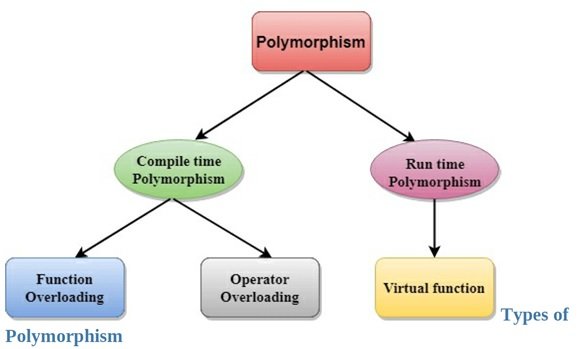
Classes in Python
Class is one of the most important concepts in object-oriented programming. Classes are classified into user-defined data types and include their own functions and data types. Programmers can access the functions and data types of a class by creating an instance of it.
Builders
Constructors are special class objects that the compiler calls when an object instance is created. Constructors have the same name as the class and are defined inside or outside the class. Here are three types of manufacturers:
1. Default builder
2. The manufacturer has a parameter
3. Copy maker
Default constructors
A default constructor is a constructor that is called without any arguments.
Parameterized constructors
It is possible to send parameters to a manufacturer. Typically, these arguments are used to construct an object when constructing it. Building a constructor with parameters is enough to specify the parameters, similar to defining functions for the constructor. When determining the constructor’s body, you use these parameters to describe an object.
Copy constructors
A constructor creates a new copy of an object, an exact copy of an existing object. In this case, the compiler provides a default copy constructor for all classes. The constructor creates an object by initializing it with an object of the same class previously created. The copymaker is used in the following cases.»
Initialize one object with another object of the same type.
Copy an object to send it as an argument to a function
Copy an object to restore it from a function
If a class does not define a copymaker, the compiler defines it. If the class has pointer variables and dynamic memory allocation, there must be a copymaker. The most common forms of a copymaker are:
Classname (const classname * & obj) {// body of constructor
}In the code snippet above, obj refers to an object used to initialize another object.
Destroyers
A destroyer is a class member’s function that is automatically called when an object is out of reach or explicitly destroyed to clear the object and free memory. The destroyer has the same name as the class, except that it has a prefix. For example, for the Destructor class, the function name of a destroyer is ru Destructor (). If the class does not define a destroyer, the compiler will create it by default.
The above approach is sufficient for most classes. You only need to define a default destroyer if you have saved the system resource handle, and these resources need to be retrieved twice. This is also true for pointers that have their own memory.
Things
An object is an instance of a class containing methods and attributes used to construct a particular data type. When you send a message to an object, you ask the object to call or execute one of the methods defined in the class. From a programming point of view, an object can contain a data structure, a variable, or a function to which memory is allocated.
This object is instantiated as a class hierarchy. A class is a blueprint for building objects (a particular data structure), providing initial values for a state (member variables or attributes), and implementing behavior (member functions or methods).
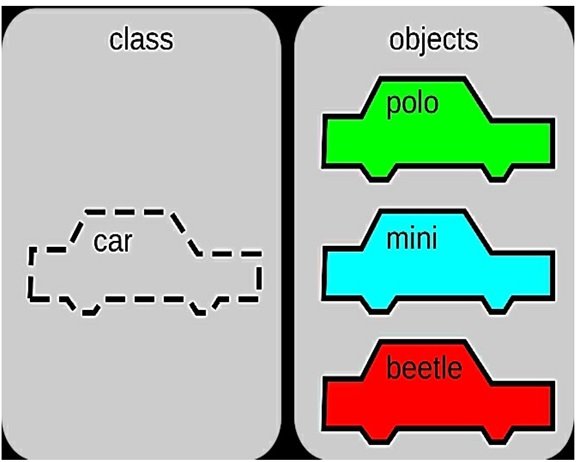 FAQ
FAQ
What foundational Python topics are covered?
The article explains core concepts like syntax, variables, data types, and control structures.
Why is learning Python basics important?
Understanding fundamentals enables learners to write correct, readable, and efficient Python code.
Who is this Python basics guide for?
Beginners and aspiring developers building their first skills in Python programming.
